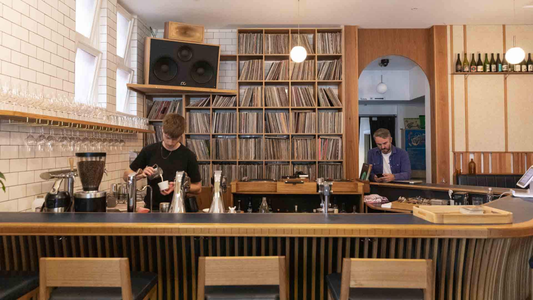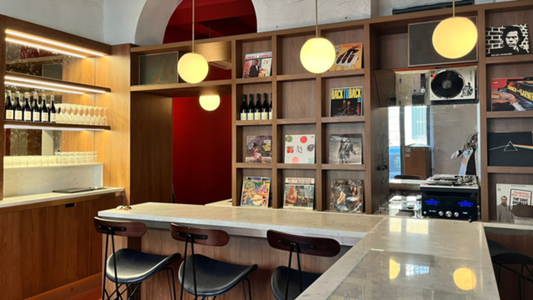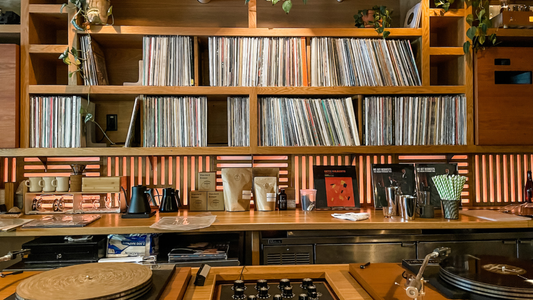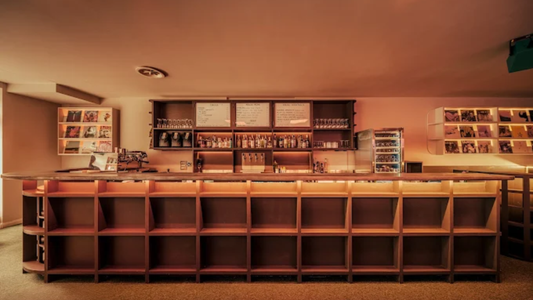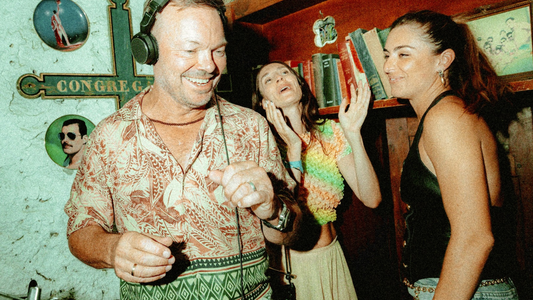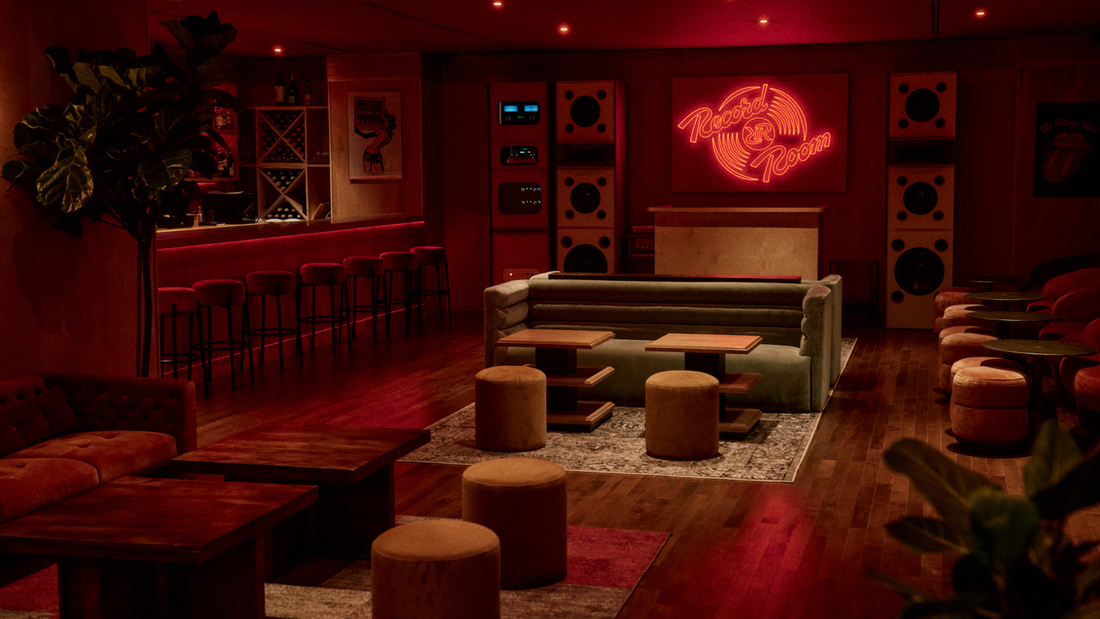
The Everywhere Rhythm: Learning to Hear in a Listening Bar
By Rafi Mercer
Rhythm is everywhere. That is not poetry, but fact. The tick of a crossing signal, the sway of footsteps on a pavement, the rise and fall of a conversation, the drip of rain against glass — all carry a rhythm. Most of the time, we don’t notice. The patterns blur into background, folded into the wider noise of living. But if you stop, if you listen, you can find it. To hear rhythm in everything is a skill. And like all skills, it can be learned.
For me, the listening bar is where that skill sharpens. Step inside and the world outside recedes. The room hushes, the lights dim, and an album begins. Not a playlist, not a shuffle, but a record, side one, track one. The sound system tuned, the speakers placed, the atmosphere thick with presence. What happens in that space is not only musical. It is educational. You are being taught how to listen.
The origin of this practice lies in Japan, in the jazz kissaten of the 1950s and 60s. These were cafés where silence was enforced, where the records were the event, where fidelity mattered more than conversation. Students, workers, wanderers — they would sit, order coffee or whisky, and listen to imported albums on systems far beyond what they could afford at home. Coltrane, Mingus, Evans, Ellington — played loud, played whole, played with care. In those rooms, people learned to hear. They discovered not only jazz, but rhythm itself.
And rhythm in jazz is not simple. It is syncopation, off-beat emphasis, swing. It is tension between steady pulse and shifting accent. It is the sound of freedom framed by structure. Listen to Art Blakey and the Jazz Messengers on Moanin’ (1958), and you hear rhythm as architecture — the drums both anchoring and provoking, the horns riding waves of push and pull. Or place Bill Evans’ Sunday at the Village Vanguard (1961) on the turntable, and notice how Scott LaFaro’s bass and Paul Motian’s drums weave counter-rhythms under Evans’ piano, creating a texture that is less beat than breath. These albums are not just music; they are lessons in rhythm.
What a listening bar does is magnify those lessons. By stripping away chatter, by playing music at fidelity and volume, it lets you concentrate. You begin to hear not only the main line but the subtleties. The ghost notes on the snare. The way a bass player leans slightly behind the beat. The stretch of time in a held cymbal crash. You start to recognise that rhythm is not just tempo but conversation.
And once you learn to hear it, you start to hear it everywhere. A train pulling into a station has a swing to it, metallic but unmistakable. A café full of clinking cups carries a brushed-drum texture if you focus. Even silence has rhythm — the intervals between sounds forming patterns of their own. Jazz trains you to notice this, because jazz is built on the art of noticing. Musicians listening to each other in real time, responding, leaving space, filling space. It is collective rhythm, improvised but shared.
This is why listening bars matter. They are not just spaces for music, but for training attention. They make listening active, not passive. They invite you to lean forward, to hold still, to discover rhythm beneath the surface. In a world designed to distract, that is a radical invitation.
The rhythm is not always obvious. Take Idris Muhammad’s Power of Soul (1974). The groove is thick, steady, almost hypnotic, but within it are tiny variations — the hi-hat opening slightly, the kick drum leaning heavier on certain beats. Those details make the difference between a loop and a performance. Or listen to Nina Simone’s Nina Simone and Piano! (1969). The rhythm is not in drums or bass, but in the phrasing of her voice, the pauses between piano chords. The spaces she leaves are as rhythmic as the notes she plays. A listening bar teaches you to catch those spaces.
And then, when you step back outside, the city itself becomes music. The traffic lights blink in tempo, footsteps align in counterpoint, wind rattles a loose sign like a snare. You begin to hear the everyday as composition. Life itself becomes a jazz record — messy, syncopated, improvised.
This, to me, is the true gift of the listening bar. Not only that it gives you albums at their best, but that it recalibrates your ears. It tunes you to rhythm. It makes you aware. And once you carry that awareness, you live differently. The world feels less like noise, more like music.
The jazz kissaten knew this. They were never just cafés. They were schools of attention. They gave people who could not afford records or hi-fi systems a chance to learn how to listen. They created communities around silence and sound. They proved that rhythm was not the property of musicians, but of everyone willing to hear.
Today’s listening bars inherit that ethic. They are not nostalgic recreations, but living classrooms. They remind us that listening is a skill, and rhythm is everywhere. And they offer us albums as guides. Mingus’ Ah Um (1959). Coltrane’s Crescent (1964). Kamasi Washington’s The Epic (2015). Albums where rhythm is not background but presence, teaching us, line by line, how to hear.
So the next time you step into a listening bar, remember this: you are not only there to drink and relax. You are there to practise. To learn. To sharpen the skill of listening. To discover rhythm in the music, and then to carry it into the world outside. For once you start listening, rhythm reveals itself everywhere. And once you know it, you cannot return to silence as emptiness. Silence itself becomes rhythm, waiting to be heard.
Rafi Mercer writes about the spaces where music matters. For more stories from Tracks & Tales, subscribe, or click here to read more
